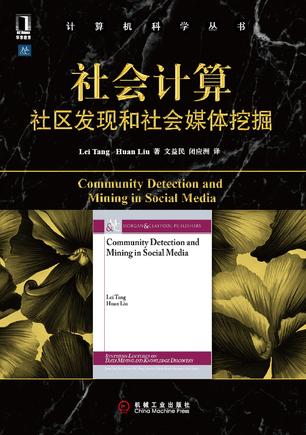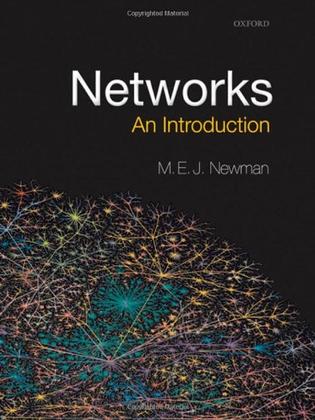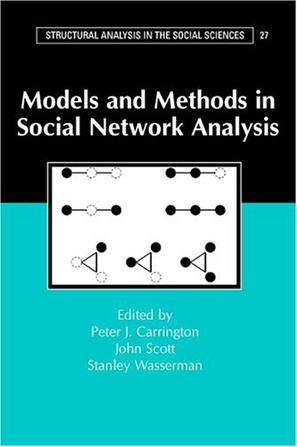-

社会计算
在刚过去的十年我们见证了共享Web和社会媒体的诞生,它们用各种富有创意的方式将人们联系在一起。目前,成千上万的用户忙着在线玩、加标签、工作以及开展社交活动,合作、通信和智能正采取着前所未有的新形式。社会媒体的出现促进了商业模式的改变,影响了人们观点和情感的沟通,为大规模地研究人际交互和集体行为提供了无数机会。 本书从数据挖掘角度介绍社会媒体的性质,评述社会媒体计算的代表性成果,并描述社会媒体带来的挑战。书中介绍了基本概念,使用浅显易懂的例子展示最新的和有效的评价方法。特别是讨论了基于图的社区发现技术并对处理社会媒体中动态的、混杂的网络进行了重要延伸。另外还展示了发现的社区模式怎样用于社会媒体挖掘。本书中的概念、算法和方法能够帮助人们更好地利用社会媒体,并为建立社会化智能系统提供支持。本书是研究社会媒体中社区发现与挖掘技术的入门级读物,适合以数据为中心的社会媒体学科的学生、研究者和实践者阅读。 本书网站http://dmml.asu.edu/cdm/提供了讲课幻灯片、书中所有的图、主要的参考文献、书中使用的一些小型数据集,以及一些代表性算法的源代码。 -

Networks
The scientific study of networks, including computer networks, social networks, and biological networks, has received an enormous amount of interest in the last few years. The rise of the Internet and the wide availability of inexpensive computers have made it possible to gather and analyze network data on a large scale, and the development of a variety of new theoretical tools has allowed us to extract new knowledge from many different kinds of networks. The study of networks is broadly interdisciplinary and important developments have occurred in many fields, including mathematics, physics, computer and information sciences, biology, and the social sciences. This book brings together for the first time the most important breakthroughs in each of these fields and presents them in a coherent fashion, highlighting the strong interconnections between work in different areas. Subjects covered include the measurement and structure of networks in many branches of science, methods for analyzing network data, including methods developed in physics, statistics, and sociology, the fundamentals of graph theory, computer algorithms, and spectral methods, mathematical models of networks, including random graph models and generative models, and theories of dynamical processes taking place on networks. -

Models and Methods in Social Network Analysis (Structural Analysis in the Social Sciences)
Models and Methods in Social Network Analysis presents the most important developments in quantitative models and methods for analyzing social network data that have appeared during the 1990s. Intended as a complement to Wasserman and Faust's Social Network Analysis: Methods and Applications, it is a collection of articles by leading methodologists reviewing advances in their particular areas of network methods. Reviewed are advances in network measurement, network sampling, the analysis of centrality, positional analysis or blockmodelling, the analysis of diffusion through networks, the analysis of affiliation or 'two-mode' networks, the theory of random graphs, dependence graphs, exponential families of random graphs, the analysis of longitudinal network data, graphical techniques for exploring network data, and software for the analysis of social networks.